 LE MAGAZINE
LE MAGAZINEWhich midlenght board should you choose for wing foil?

Choosing a midlength board for wingfoil is a crucial step for riders who want to combine light wind range, maneuverability and performance. We hear it all the time on the beach. But which board should you choose for light winds? The main advantage of this type of light wind board is to optimize light wind conditions and thus increase your sessions in light wind tenfold.
Among the many models available on the market, the Light Wind (LW) range from SROKA range stands out for its innovative design and versatility. In this article, we’ll give you all the information you need to choose your new midlenght board. This comprehensive guide will give you all the information you need to make the right choice.
Building Midlenghts boards
1.1 Materials:
Focus on well-built boards. It’s not enough to slap a brand name logo on your board to make it perform. The materials used, and therefore the construction, is one of the fundamental criteria for having a board that lasts over time with excellent performance. Carbon pvc sandwich boards provide maximum stiffness, strength, responsiveness and responsiveness. We use a full carbon sandwich construction on our midlenght models. Not all brands do. Take a close look at the construction of the boards of the brand you want to buy.
1.2 Reinforcements:
Strategically placed reinforcements in the most stressed areas (deck, rails, straps, foil) increase the board’s rigidity and longevity. If, for example, your US rails are glued into blocks of pvc running from the deck to the hull, your board will be more responsive and therefore more responsive. The larger the board, the more torsion and deformation it may undergo, resulting in a loss of responsiveness and handling. That’s why we’ve added a layer of carbon to the rails to stiffen the boards even more, and also to increase their longevity.
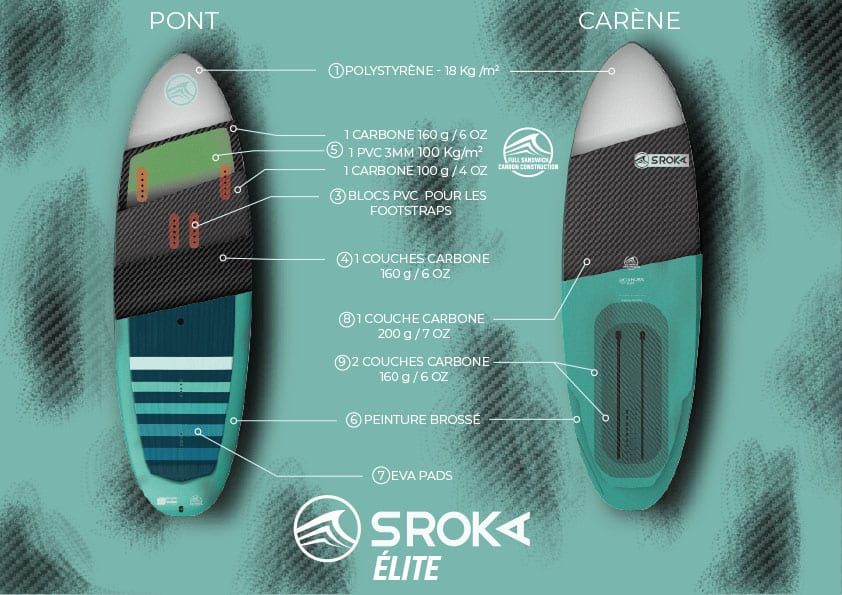
1.3 Overall weight:
don’t kid yourself. To get a very light board, you need to remove some of the material inside. To gain strength, you need more material (carbon or PVC reinforcement) to add weight. But make no mistake. The lighter the board, the less responsive it will be, and the less rigid and solid it will be. It’s all a question of compromise. We’ve chosen to reinforce our boards to make them more responsive and easier to handle. So much for the extra few hundred grams. Being the most rigid and solid over time is a priority for us. A midlenght board is an investment that should last you a long time and help you sail better.
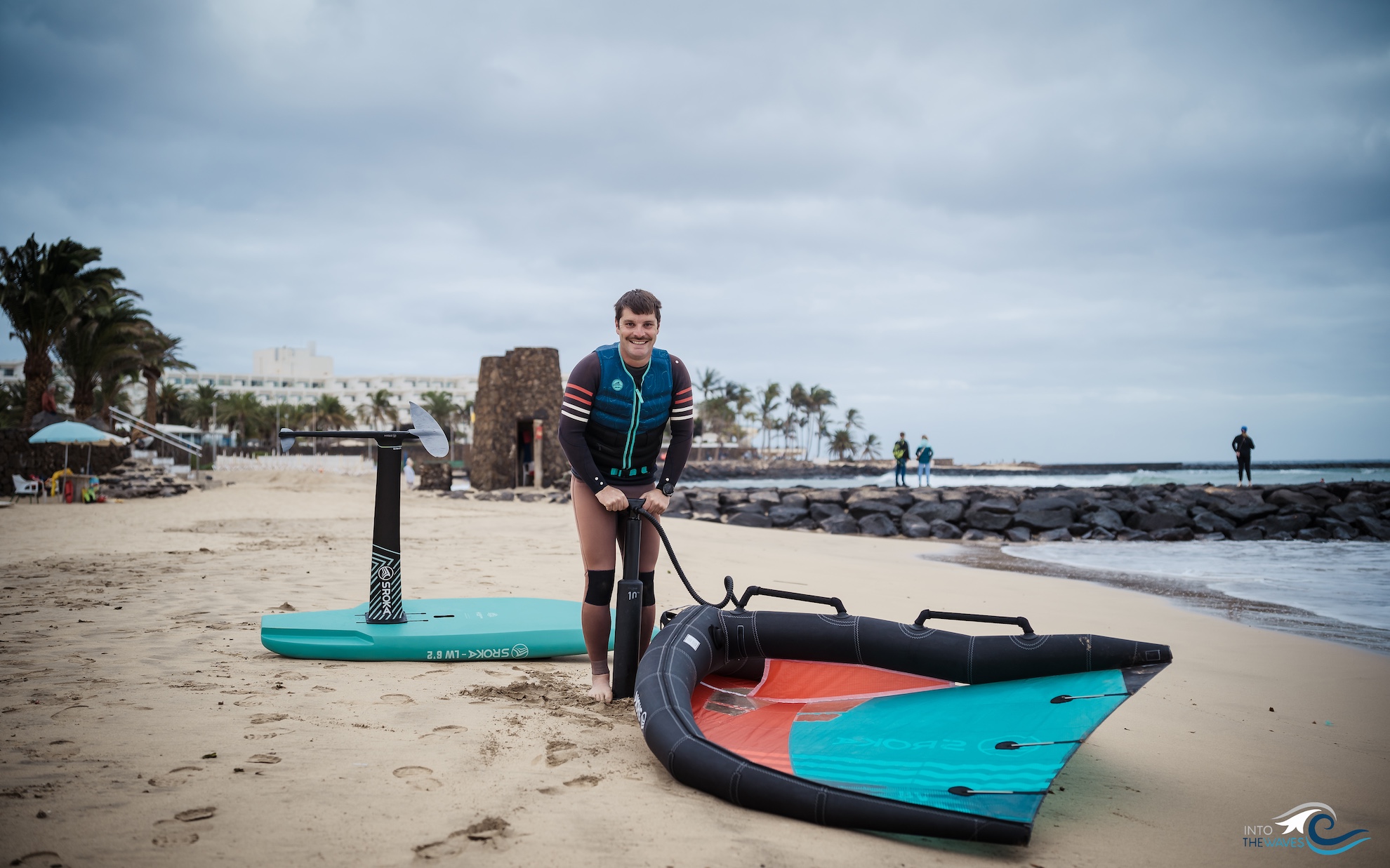
The shape of the light wind board
2.1 Volume:
Volume is the ratio of length to width to thickness. It must be sufficient (to be determined according to your weight and skill level) to facilitate planning starts, especially in light wind conditions. We have 3 Mid-lenght models: the LW 5’7x 20 in 75 L, the LW 6’2 x21 in 90 L and the LW in 6’6 x 22 in 105 L. The 6’6 will easily accommodate sailors weighing around 100 kg. On the other hand, the 75 L (LW 5’7) will be perfect for anyone under 75 kg.
2.2 The shape:
A parallel outline (taut) favors stability and glide, and consequently planning starts. If the outline is too round, you’ll automatically lose stability.
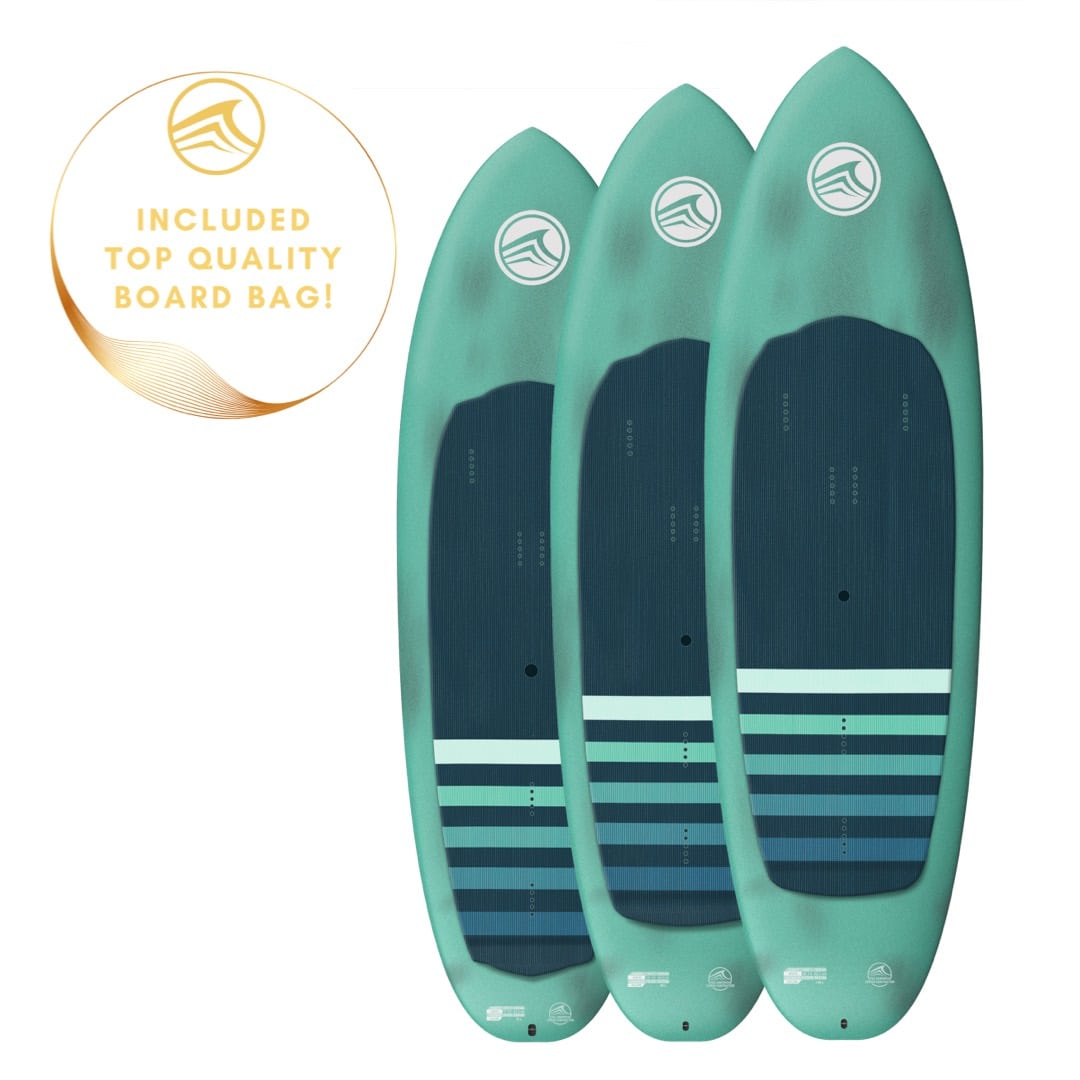
2.3 Length / width:
The length of a wing midlenght board foil is a key element in personalizing the gliding sensation. A longer board offers a more stable and fluid feel, ideal for long sessions in very light winds. A shorter board, on the other hand, provides a more direct and responsive feel, perfect for riders who like dynamic maneuvers and a more radical surf or curve feel. Midlength boards are designed to offer a compromise between performance and maneuverability, enabling riders to progress quickly and navigate in light winds while having maximum fun on the water.
2.4 Rigidity:
A board that is too soft can be difficult to control, and will result in a loss of stability and control in flight. The stiffer the board, the easier it will be to control in all conditions. In our opinion, this is one of the most important keys to the success of a midlenght board.
2.5 The shape of the hull:
A double concave hull improves directional stability and facilitates planning starts. Conversely, a round hull will be more slippery, but have you ever seen a stable barrel? So this type of hull is totally out of the question if you want maximum stability. And as these boards are quite narrow, if the hull is round, instability will be increased. We recommend relatively flat hulls with a double concave towards the front. At SROKA, we’ve taken the time to really work on the LW de hulls to find the best compromise between performance and stability.
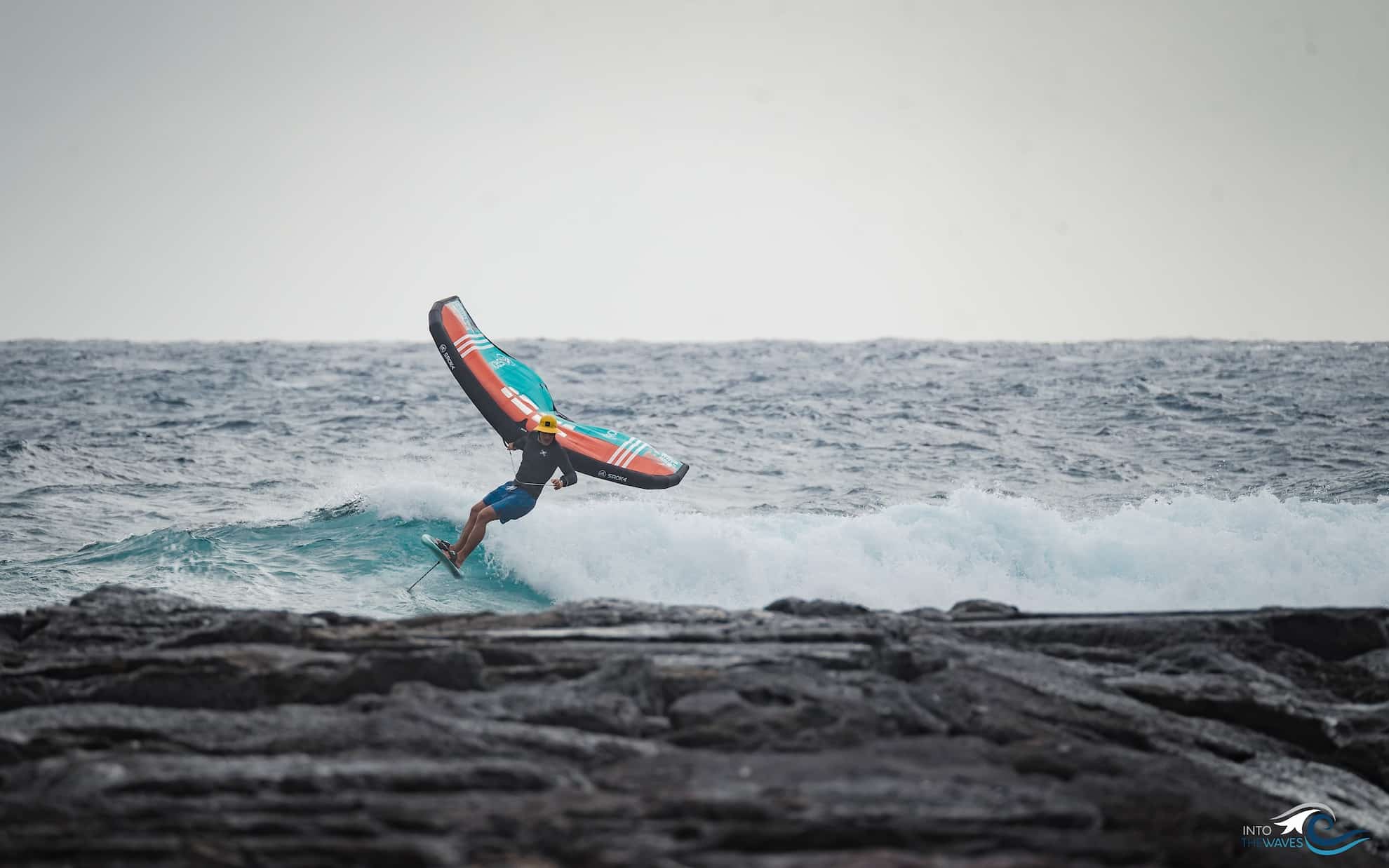
2.6 Volume distribution:
The way volume is distributed on a larger wing board foil has a significant influence on how it feels to ride. A board with more volume at the front can give the impression of having a slightly stinging foil. To achieve this, you’ll need to adjust your foil a little, or at least move it forward. The position of the rails is fundamental to good balance in flight. A board with a more homogeneous volume (more centered under the foil and in the center of the board) will feel lighter and freer, as well as more maneuverable. So don’t hesitate to try out different foil positions on the board to find the one that’s most comfortable for you.
Choosing the right midlength board will depend on your riding style?
Your wing riding style foil will greatly influence your choice of midlength board.
- Freeride and waves: To have fun on moderate waves and carve with fluidity, a slightly more compact mid-length board is ideal. This shape offers greater control and maneuverability in turns.
- Pure freeride and cruising: If you’re looking to enjoy long, relaxed cruising sessions, a mid-length board with a little more volume and a softer rocker line will give you better glide in very light winds, bringing ease and stability.
- Technical progression: For those who want to progress quickly and try out new tricks, a more compact mid-length board is ideal. It should offer a good balance between stability and manoeuvrability, allowing you to refine your pumping technique, attempt small jumps and perfect your jibes, or carve on larger swell trains.
Which Midlenght board is right for you?
Let’s take the example of a 75 kg – 80 kg rider.
- If you’re a beginner and you’re looking for stability and comfort, opt for a downwind board that’s wider and longer, which will give you more stability to start with. Like the DW 7’2 x 22, for example.
- If you’re a resourceful rider looking for a board to ride in very light winds. Then a slightly larger light wind board will give you comfort and ease. For example, a 6’6 LW.
- If you’re an experienced rider looking for thrills and radical maneuvers, a more compact wing foil midlenght board is for you. Choose the 5’7 LW
- If you want a versatile board that offers an interesting compromise between stability and maneuverability. Choose the LW 6’2.
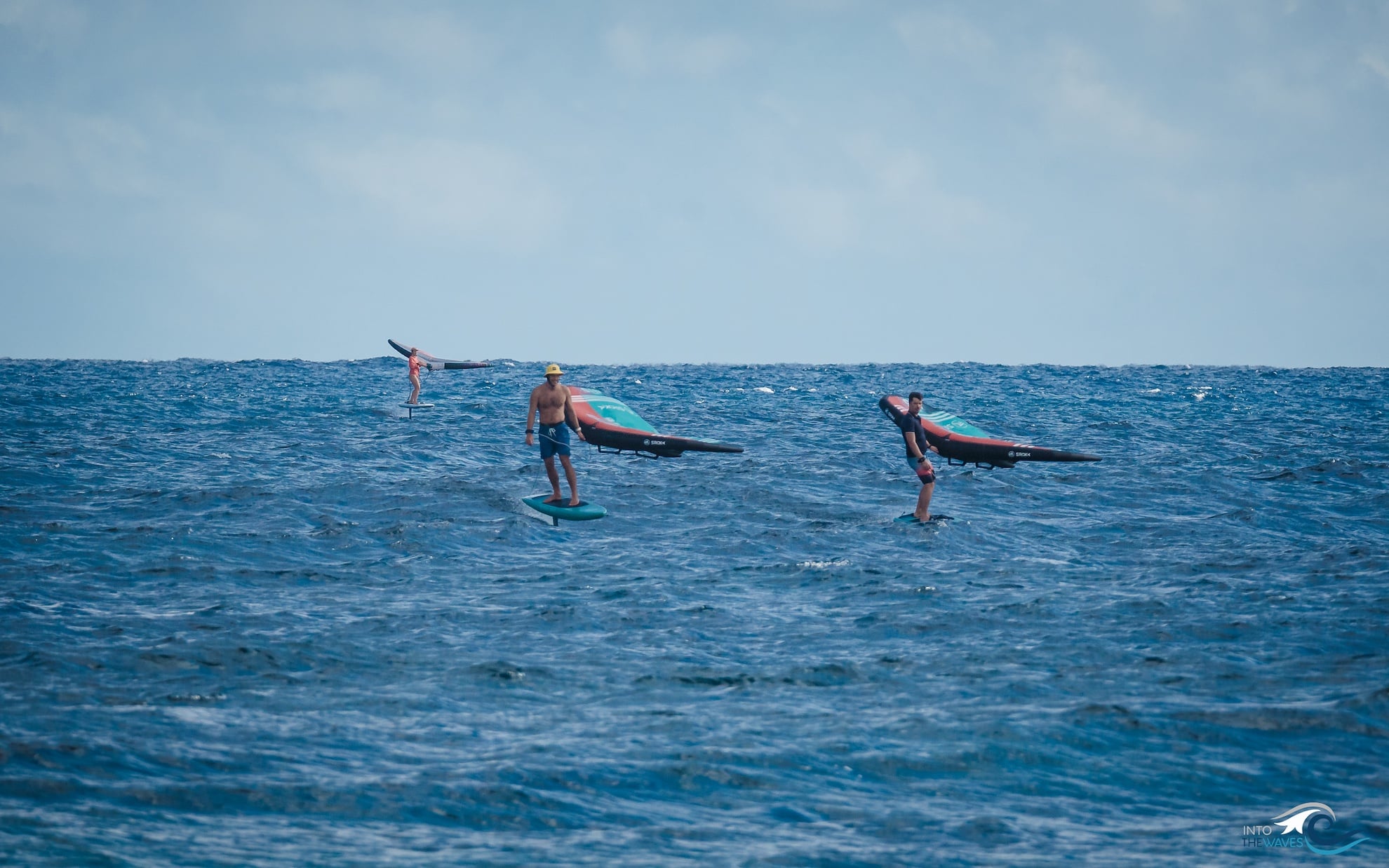
Why choose an LW SROKA board?
SROKA’s Light Wind boards have been designed to meet the needs of wingfoilers looking for performance in light wind conditions. Here are the main advantages of this range:
- Versatility: LW boards are equally at home in light swells or on flat water, offering great versatility.
- Stability: Thanks to their generous volume and carefully designed shape, mid-lenghts offer excellent longitudinal stability, making it easier to start in light wind conditions and to progress.
- Comfort: This type of board provides great comfort in flight when the boards are very stiff. And the stiffer the board, the better your performance.

- Performance: LW boards are fast to go and responsive, allowing you to fully enjoy the wing sensation foil in light winds. With an LW 6’6 and a 5-m wing with a foil in UHA 1100 cm2 you can expect to sail in 7-8 knots of wind.
- Durability: High-quality materials and strategic reinforcements on the board guarantee long life. What’s more, all SROKA Elite boards come with board covers to protect your board.
In conclusion, answering the question: which midlenght board should I choose for wing foil? requires some thought about your riding style, your level and what you want to do. SROKA’s Light Wind range represents a wise choice for wingfoilers looking for a versatile, high-performance board to do more than just one thing. Thanks to their well-thought-out, evolutionary design and the quality of their materials, these boards will enable you to make rapid progress and enjoyment on the water.
To help you choose the LW board that’s right for you, take a look at our expert advice, test out different models or contact us.
If you have any further questions, or if you have any other requests, please don’t hesitate to contact us!


